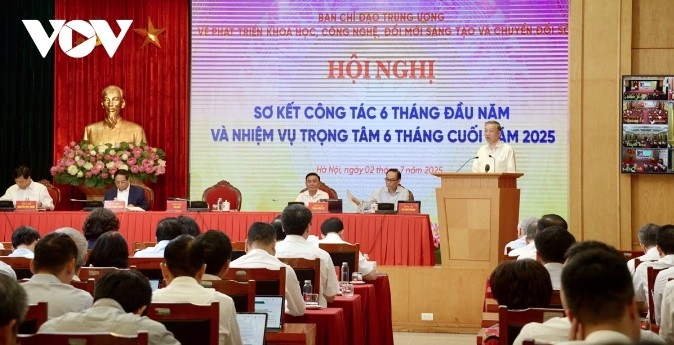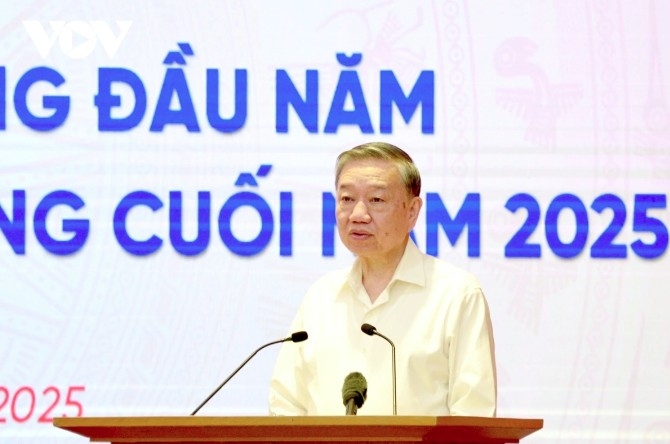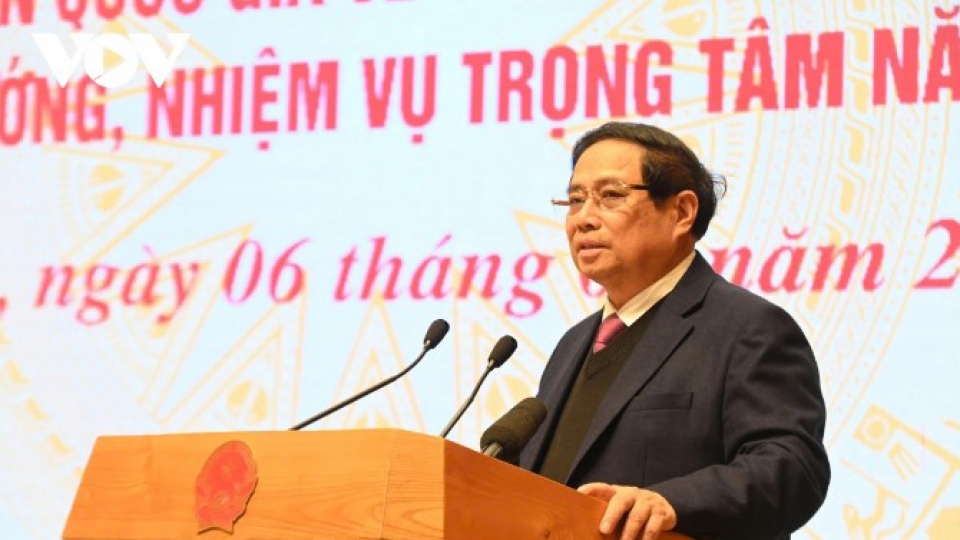Digital transformation a lifeline in new two-tier governance, says Party chief
VOV.VN - Digital transformation is a vital link between provinces and communes in the new two-tier local government model. It must serve as a data brain to aggregate and analyze information, enabling early warnings and ensuring full and timely access to information, says Party General Secretary To Lam.

General Secretary To Lam, Head of the Central Steering Committee on the Development of Science, Technology, Innovation and Digital Transformation chaired a conference on July 2 in Hanoi, reviewing the committee’s work in the first half of the year and setting directions for the remainder of 2025.
In his remarks, the Party chief applauded the Committee’s early results, and solutions-focused discussions from delegates across the country. These efforts, he said, reflect the common aspiration to contribute from the entire political system, the people, and the business community to national development.
Looking ahead, he instructed ministries, sectors, localities, and committee members to focus on eight priority tasks for the rest of the year. In particular, leaders of central and local bodies must take greater responsibility, act with political determination, and lead with resolve and consistency to strengthen public trust. He laid stress on the need for focused leadership, especially in the operation of the new two-tier local government system.
Emphasizing the critical role of digital transformation amid the ongoing reorganization of local administration, the General Secretary pointed out that with the removal of district-level governments, provincial leaders now manage directly down to the commune level. “Without technology and data-based governance, it will be impossible to issue timely instructions or monitor and coordinate local affairs. This may result in administrative bottlenecks and hinder the timely provision of services to citizens and enterprises.
“This is a very real concern. I want to be clear: digital transformation is the central nervous system-an indispensable link between provincial and communal levels under the new model. Without digital transformation, the two-tier model cannot function effectively,” he emphasized.
The Party General Secretary also assigned the Party Central Committee (PCC)’s Commission for Communication, Education and Mass Mobilization to lead in designing a nationwide communications campaign on breakthrough developments in science, technology, and innovation. He called for special emphasis on risk-tolerant regulatory mechanisms, to build public and business confidence in these sectors.

He further urged ministries, sectors and localities to properly implement the strategic action plan for Resolution 57 of the Politburo.
The Ministry of Science and Technology was tasked with researching and proposing policies to encourage the establishment of startups, support product development from research institutes and universities, and design substantive programs connecting scientists with businesses to advance the commercialization of technological products. The ministry is also expected to continue exploring models for new generation technological universities.
Earlier, a report at the conference highlighted that six months after its adoption, Resolution 57 had driven a clear shift in awareness and action across the political system. Notably, the Steering Committee had rolled out two major strategic plans: Action Plan No. 01 and Plan No. 02 which reflect a bold, practical, and visionary approach.
Meanwhile, Vietnam’s science, technology, and innovation ecosystem continues to grow robustly, with 858 science and technology enterprises, 45 high-tech firms, and over 73,000 digital technology companies now active nationwide.
The Ministry of Science and Technology has also mobilized 277 experts to participate in key national programs on artificial intelligence, contributing to the development of a high-quality workforce for strategic fields.
Still, many delegates emphasized that achieving the ambitious targets ahead would require persistence, discipline, and firm resolve to remove bottlenecks and concentrate resources for tangible, lasting outcomes over the rest of 2025 and beyond.
On this occasion, witnessed by Party General Secretary To Lam and Prime Minister Pham Minh Chinh, the conference introduced three new digital platforms, including the Communist Party of Vietnam’s official portal in the digital space; a monitoring and evaluation system for Resolution 57; and an information platform for receiving and processing public feedback, policy recommendations, and innovation proposals in science, technology, and digital transformation.




